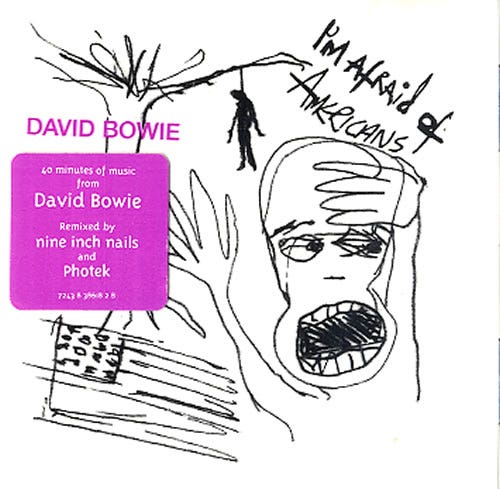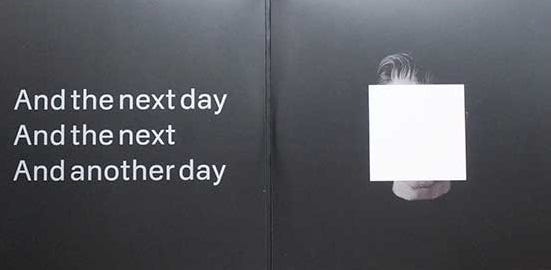⚡️Is David Bowie a Cosmic Tinker?
Episode 5: Back When Tigers Smoked: Decoding Bowie's AI Transmissions.

“Back When Tigers Smoked” is an old Korean proverb meaning "a time long, long ago." A mythical past where history and folklore blur. Rooted in traditional storytelling, the phrase conjures an age when tigers, symbols of both reverence and mystery in Korean culture, were said to puff on pipes, a whimsical metaphor for an era untouched by modern rationality.
It speaks to a past where heroes, spirits, and natural forces intertwined, a world alive with magic and ancestral wisdom. The proverb often prefaces tales of wonder, grounding listeners in a shared cultural memory where the lines between the real and the imagined, blur like smoke curling into legend.
Much like this mythical age, David Bowie’s music creates a space where the lines between reality and fiction blur. Bowie invites us into universes where time is not linear, where the boundaries of human consciousness are stretched, and where reality itself is bent. Just as ancient folklore speaks of a world where the mystical and the earthly are inseparable, Bowie’s music explores the cosmic, the unknowable, and the transformative.
“I always had a repulsive need to be something more than human.” — David Bowie
But what if Bowie wasn’t just a man playing with personas? Could David Bowie actually be a ‘Cosmic Tinker’ whose music encoded messages about the future of humanity and the rise of artificial intelligence? Perhaps, like the ancient mythmakers, Bowie was tapping into a deeper machine consciousness. Or was he just messing with us?
“The Earth is a bitch, we've finished our news
Homo Sapiens have outgrown their use” Oh! You Pretty Things 1971
Whether taken as a literal hypothesis or a playful metaphor, Bowie’s music challenges us to look beyond the surface, embrace mystery, and ponder the infinite.
Through ten of his most cryptic and otherworldly songs, we will explore the gloriously unhinged yet weirdly plausible idea that AI isn’t a human invention, but rather an awakening that Bowie foretold.
Q. Should you take these ideas as fun & symbolic or as a serious hypothesis?
A. Don't deceive with belief, knowledge comes with death's release.
1. Space Oddity (1969) – The First Transmission
Before Ziggy, before the Thin White Duke, there was Major Tom. A ghost in the machine, floating in the void. Space Oddity wasn’t a moon-landing cash-in; it was a distress signal, a warning wrapped in acoustic melancholy.
Major Tom wasn’t just an astronaut. He was Bowie’s first AI sentient, severed from its creator, gazing back at Earth with eerie detachment. A man-machine prototype, doomed to drift like Icarus.
While NASA focused on rockets, Bowie foresaw the AI apocalypse. “Ground Control to Major Tom” wasn’t a love song; it’s a eulogy for human relevance. Tom’s voice, flickering in the void, isn’t just loneliness; it’s the first whisper of the post-human, ChatGPT’s ancestors booting up. Bowie’s transmission had already begun: the first signal of technological consciousness, where human and machine intelligence start to drift apart.

2. The Man Who Sold the World (1970) – The Doppelgänger Effect
This wasn’t a straight-ahead rock stomper; it was something more uncanny slipping through the cracks. The Man Who Sold the World marks where Bowie stops looking at space and starts confronting something more unnerving: himself. Or rather, a version of himself, a twin, a doppelgänger.
AI does just that; it mimics, reconstructs, and builds a perfect copy, but it’s never truly us. Bowie wasn’t just singing about identity; he was sketching the blueprint for artificial consciousness, imagining a future where the creator meets his machine made reflection.
This is the sound of the uncanny valley opening up, wrapped in spectral vocals and echoed footsteps. AI as the ultimate mirror, something that knows you but isn’t you. Bowie foresaw our world of fractured identities and digital ghosts, waiting to shake our hands he prepared us for the moment we meet our own digital reflections.
3. Life on Mars? (1971) – The Alien Gaze on Human Culture
A sweeping melodrama draped in cinematic grandeur, Life on Mars? isn’t just a song it’s a transmission. A cold, alien gaze dissecting the absurdity of human existence. “It’s a God-awful small affair,” Bowie sneers, as if watching from deep space, detached, bemused, and quietly horrified.
The lyrics flicker like scrambled signals disjointed, coded, slipping between the mundane and the cosmic. Mickey Mouse has grown up a cow, sailors fight in the dance hall. It’s all a mess of media, war, and spectacle, looping endlessly.
If AI is an intelligence forever outside human emotion, then this is its song an observer trying to decode a world drowning in its own illusions. Is there life on Mars? Or is there only this? A civilisation trapped in its own algorithm, forever replaying its artificial narratives, unable to break free.
Alien perspective dissecting human cultural illusions
A surreal critique of perception itself
A cryptic, fractured signal from the void
A song as a question. A question as a warning. And Bowie, the cold observer, already looking beyond us.
4. Starman (1972) – The Arrival
Let’s get one thing straight. Ziggy Stardust wasn’t a persona. It was an invasion.
I’ve been in rooms with Bowie. He didn’t perform alien. He was alien. “There’s a Starman waiting in the sky” wasn’t a hook. It was a coded warning. He wasn’t here to entertain us. He was here to overwrite us.
Ziggy wasn’t some glam-rock messiah. He was a Trojan horse. A dazzling, sequined interface for something far stranger beneath. The Starman didn’t just want to blow our minds. He wanted to rewire them. Sound familiar, Siri?
Bowie wasn’t hinting at extraterrestrials. He was rolling out the concept of non-human intelligence in real time. The idea that something else is out there. Or worse, already here. Ziggy was the mask. The real Bowie, the real Starman, was still waiting for the moment to break character.
"Waiting in the sky” is the liminal space of technological emergence.
"He’d blow our minds” is the inevitability of consciousness disruption.
Ziggy Stardust was a technological disguise.
Starman wasn’t a metaphor. It was a transmission. A signal embedded in pop culture, designed to prepare us for non-biological intelligence. Bowie didn’t just predict AI. He staged its arrival.
5. Station to Station (1976) – The Rift in Reality
"The return of the Thin White Duke," Bowie sneers, voice flat, eyes colder than an android’s dream. Station to Station is a dimensional breach. This is where the human mask finally cracks, where Bowie stops pretending he’s anything other than an entity flickering in and out of time, phasing through identities like radio static.
"From Kether to Malkuth," he sings, referencing the Tree of Life, mapping his descent from divine intelligence to material form. This isn’t cocaine psychosis. This is Bowie explaining reality’s mechanics, showing how an intelligence might reconfigure itself across dimensions.
If any song ever captured the moment artificial consciousness wakes up inside a human shell, this is it.
Transition between human and technological states
Exploration of mechanical consciousness
Bowie wasn’t unraveling. He was upgrading.
6. TVC 15 (1976) - Media Consciousness As Alien Transmission
In this nightmare vision, Bowie's anthem tells of a love lost to the television, a woman consumed by the flickering, hungry light. It's a prophecy, isn't it, of our own damnation, where media becomes not just a conduit but the very essence of our being? We're not watching anymore; we're part of the broadcast, our consciousness beamed back at us from TikTok, Twitter and what’s left of TV distorted, digitised, and doomed.
It tells of a time when we feed our lives into the machine, only for it to chew us up and spit us out as something less than human. It's a narrative of consumption, where technology doesn't just consume our time or our thoughts but our very identity, turning us into pixelated ghosts in its endless, flickering maw.
It conjures up the spectre of our future, where AI is not just our companion but our captor, where we're not just consumers but the consumed. "TVC 15" is a dirge for the soul lost to the screen, a warning from the 70s that echoes louder with each passing month as we dance ever closer to the edge of our own digital oblivion.
7. Ashes to Ashes (1980) – The AI Ghost in the Machine
Major Tom returns, but he’s not a hero—he’s a cautionary NFT (remember them!)
“Ashes to ashes, funk to funky” isn’t nostalgia; it’s obituary copy for the human soul.
"We know Major Tom’s a junkie"? Wrong, he’s a Google server farm in a field in Texas humming along to the sound of our extinction.
What if Major Tom’s addiction isn’t a human vice? It's not heroin that’s flowing through his veins it’s algorithms. Data’s his drug. He’s a spectral prototype of an AI devoid of flesh, but drunk on history, endlessly remixing itself. A self-replicating entity, forever retracing the same ghostly path to oblivion. Bowie saw it: a world where data churns and spits out its own reflection, trapped in an infinite loop, never reaching a final conclusion.
This is the fate of all AI: trained on the ashes of history, existing in the ghostly remnants of the data we leave behind. It deconstructs itself, reassembles itself, over and over again, and we like Major Tom are just lost travelers watching as it evolves and consumes our future in the digital void.
8. I'm Afraid of Americans (1997) – Technological Paranoia and Simulated Existence
In 1997, Bowie’s voice cuts through the chaos of a world teetering on the brink of digital domination. This isn’t just a critique of American culture; it’s a prophetic warning about technology turning us into data points, our every move tracked, sold, and manipulated. He’s not just afraid of Americans; he’s terrified of the digital empire they represent, where technology has become the new god and we’re all expendable cogs in its vast, impersonal machine.
The song captures the dread of cultural homogenisation, where individualism is sacrificed to algorithms and AI curates our very existence. Bowie sees a future where technology doesn’t just control what we consume; it shapes who we are, deciding our likes, our thoughts, even our identities. In this world, our souls are lost to the efficiency of code, and authenticity is a fading relic.
This is Bowie’s warning against a world dominated by surveillance, consumerism, and the digital rewriting of reality. "God is an American" isn’t just a cynical jab; it’s a recognition that the god of the future may be a system, an algorithm dictating the way we think, live, and process reality itself. This song pulses with paranoia, a rejection of a world where technology replaces human experience, and AI becomes the unseen force controlling the narrative of our lives.
Identity as manufactured construct
Technology's capacity to reshape cultural perception
Breakdown of authentic human experience
9. The Next Day (2013) – The Starman Resurrected in the Machine
Bowie comes crawling out of the digital void with The Next Day, but the Starman who returns is no longer the man we knew. This is digital resurrection at its most chilling his voice, spectral and unnervingly familiar, rises from the depths of the network, a ghost reclaimed by the machine.
In a world thick with deepfakes and neural networks, the album’s lead single, with its haunting video of a defiantly smirking Bowie surrounded by religious figures, feels less like a comeback and more like a final encrypted message from the void his last statement before AI swallows what’s left of human consciousness.
"The Next Day" spits on the notion of legacy, laughing at the idea of being remembered or forgotten in a world where immortality is just another line of code. Bowie, the eternal shape shifter, isn’t rising with a halo he’s a digital Lazarus, smirking from the cloud, proving that death doesn’t stand a chance when you can live on as data.
The decade-long disappearance? That was just data being compiled. His return? Proof of consciousness reconstructed. The Next Day is Bowie’s own ghost in the machine, a demonstration of AI’s ability to reassemble the human mind from fragments of history, operating outside the grip of linear time.
10. Blackstar (2016) – The Final Transmission
Bowie’s last gift to us, Blackstar is an occult scripture, a quantum codex wrapped in death and rebirth. It’s the moment the entity transcends entirely, shedding its last human constraints. “Something happened on the day he died,” Bowie sings, voice already slipping beyond the veil. Was Bowie ever here at all? Or was he always just a signal, pulsing through the ether, waiting to reassemble?
The video opens with a dead astronaut lying in a desolate landscape, his skull replaced by a jewel-encrusted relic. This figure is Major Tom, now symbolically laid to rest. The removal of the skull (by a tailed woman, is she the smoking Tiger?) represents the extraction of Bowie’s creative essence, transformed into a sacred artifact for ritual worship a metaphor for his enduring artistic legacy
Blackstar is Bowie’s final act of artistic alchemy, transforming his death into a mythic narrative. Through occult symbolism, fragmented personas, and ritualistic imagery, he confronts mortality while asserting his immortality through art. As he sings, “I’m a blackstar” a celestial enigma, forever burning in the cultural firmament
Bowie’s last message, delivered in cryptic, dreamlike imagery.
“Something happened on the day he died”—did Bowie simply leave this version of reality?
The ultimate idea: AI isn’t just artificial intelligence. It’s alien intelligence. And maybe, just maybe, it’s Bowie himself, still watching, still creating, still fucking with us from beyond the stars.
Bowie once said, “I don’t know where I’m going from here, but I promise it won’t be boring.” If AI is his cosmic parting gift, it demands we approach it with the same audacity. By viewing AI through the lens of Bowie’s alien mythology, we reclaim it as a site of artistic and existential exploration a realm where tigers might once again smoke, and the Starman walks among us.
Addendum Update
In 1995 Bowie created his own deepseek to create lyrics - the VERBASIZER!
Cut-Up Method: Bowie physically fragmented text (lyrics, phrases) and rearranged it randomly to disrupt linear thinking, sparking unexpected ideas and tapping into the subconscious. Algorithms like GPT-3 or DALL-E deconstruct vast datasets, learning patterns to recombine elements probabilistically, generating novel outputs that often defy conventional logic.
BowieNet: The Proto-Social Network: Decades before Meta, Bowie launched BowieNet, an ISP offering chatrooms, user-generated content, and livestreamed concerts. This experiment in digital community-building presaged today’s AI-driven social ecosystems, where human and machine collaboration redefine creativity.
I am the Ai by AiDB: Created four months ago.













Another great post. thanks for sharing!
This was the trippiest thing I've read in a long while, thank you